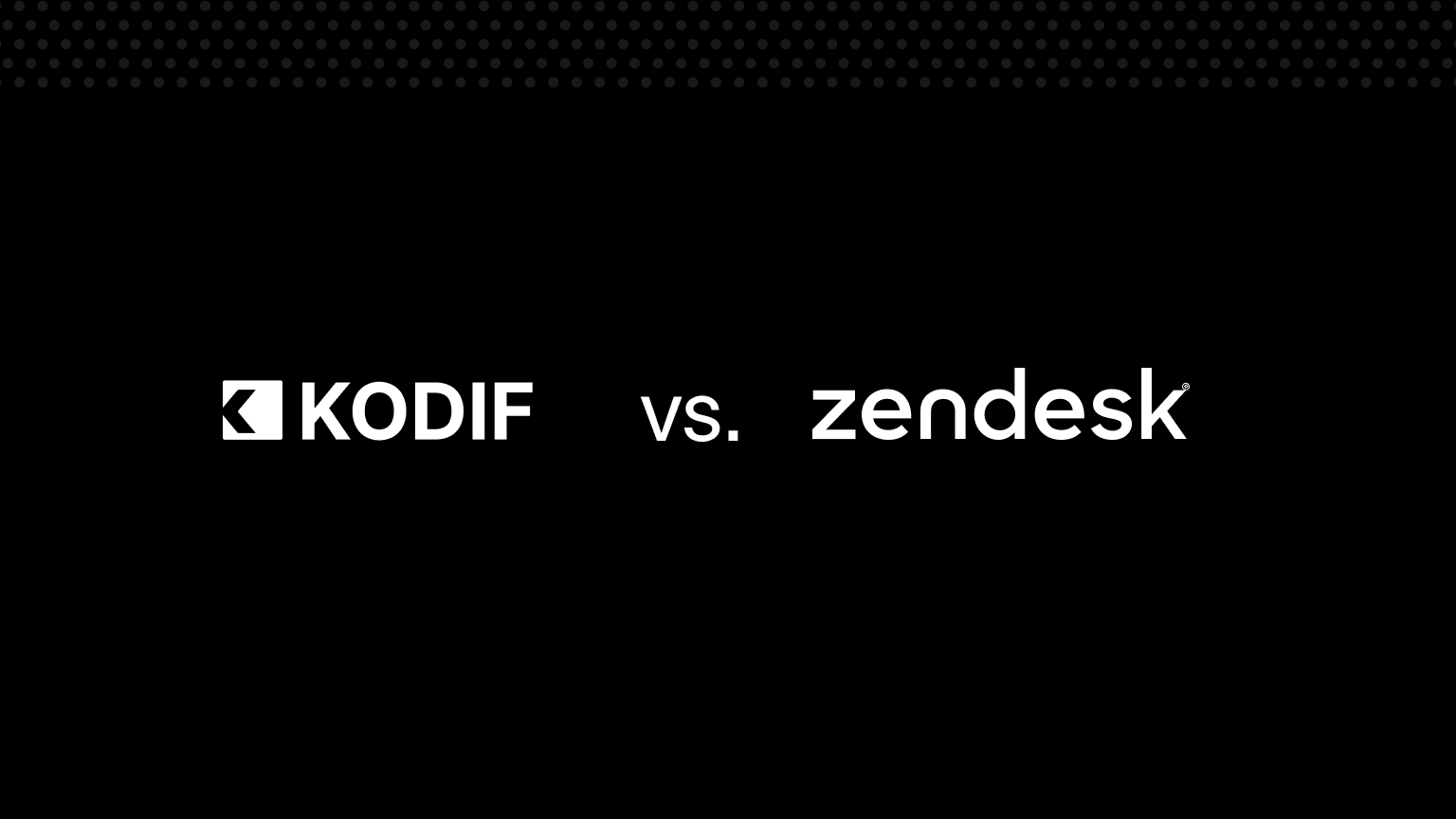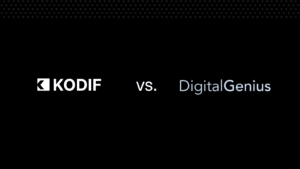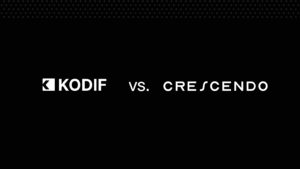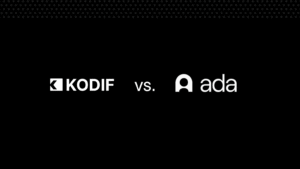Zendesk has been a household name in customer support for more than a decade. It’s a solid choice if what you need is a traditional helpdesk: ticket management, omnichannel inboxes, knowledge bases, and reporting.
But customer expectations—and CX technology—have changed. Today, many teams aren’t just looking to manage tickets.
They want to resolve them automatically, prevent them where possible, and turn CX from a cost center into a growth driver. That’s where KODIF comes in.
At a glance
Zendesk is one of the most established helpdesks out there, known for ticketing and omnichannel support.
KODIF, by contrast, isn’t a helpdesk at all—it’s built for resolution-first automation, with AI that takes action instead of just routing or deflecting. Here’s how the two stack up side by side:
| KODIF | Zendesk | |
| Core focus | Resolution-first automation across the full journey | Omnichannel helpdesk & ticket management |
| Approach to AI | Agentic AI that takes real actions (refunds, returns, subscription edits) | AI/chatbots (Answer Bot) for triage, FAQs, and ticket routing |
| Who owns automation | CX teams via no-code builder | Typically admins; deeper workflows often require dev/IT |
| Strengths | Fast setup, deep ecommerce integrations, measurable retention/revenue impact | Centralized ticketing, strong reporting, mature support ecosystem |
| Best for | Brands that want AI to do things, not just route tickets | Teams that need a traditional helpdesk to manage volume |
The big differences
1. Helpdesk vs. automation platform
- Zendesk: Designed first and foremost as a helpdesk. Great for tracking, routing, and organizing tickets, but automation often stops at FAQ suggestions or routing.
- KODIF: Not a helpdesk—it’s an automation layer that resolves issues across the entire customer journey. It doesn’t just manage tickets, it reduces and resolves them.
2. AI that acts vs. AI that routes
- Zendesk: AI typically means chatbots or Answer Bot, which surface help articles or route conversations. Helpful for triage, but limited when it comes to actually fixing problems.
- KODIF: Built on agentic AI that acts: issuing refunds, handling returns, pausing subscriptions, updating addresses. Real changes, not just suggestions.
3. Who’s in control
- Zendesk: Admins or IT usually control workflows. Complex automation often requires developer involvement.
- KODIF: Designed for CX leaders to own. No-code builder puts CX teams in the driver’s seat.
4. Ecosystem depth
- Zendesk: Huge marketplace of apps, but integrations often run shallow (basic data sync, limited actions).
- KODIF: Built for ecommerce and subscription brands, with deep integrations across Shopify, Skio, Recurly, Klaviyo, LoopReturns, ShipMonk, and 100+ others—so automation doesn’t just pull data, it takes action.
5. Measuring success
- Zendesk: Success is usually measured in efficiency: ticket volume, resolution time, cost per ticket.
- KODIF: Success is measured in growth outcomes: containment and resolution, churn saved, AOV increases, insights captured from customer interactions.
Bottom line
If you need a traditional helpdesk to manage omnichannel support and centralize tickets, Zendesk is a proven, reliable choice.
But if you want automation that does more than triage—automation that actually resolves customer problems, reduces churn, and gives CX teams control—KODIF is built for that.
More interested in KODIF?
Here are some more details on KODIF and what we can do.
| Area | Details | Why it matters |
| Core positioning | No-code automation layer across CRMs and tool stack | Avoids re-platforming, faster value |
| Returns/refunds | Deep integrations (Shopify, Recharge/Loop, etc.), label/refund actions | Automates top D2C drivers |
| Builder experience | Natural language, transparent reasoning | Client ops can own iteration and AI is not black box |
| Agent Assist | CRM co-pilot and “side-pane” drafts, fallback via tags/views | Higher agent efficacy |
| Knowledge/policy | Skills library, versions, audit trails | Governance for 1 → 100 |
| APIs/Webhooks | Webhook node + attribute routing | Allows for proactive flows and integrations |
| Reporting | Light native, export events to data warehouse | BYO analytics with full observability |
| Compliance | SOC2, GDPR, CCPA, ISO 27001, HIPAA | Meets procurement needs and minimizes legal drag in acquisition |
Want to learn even more and see it all in action? Book a demo!









